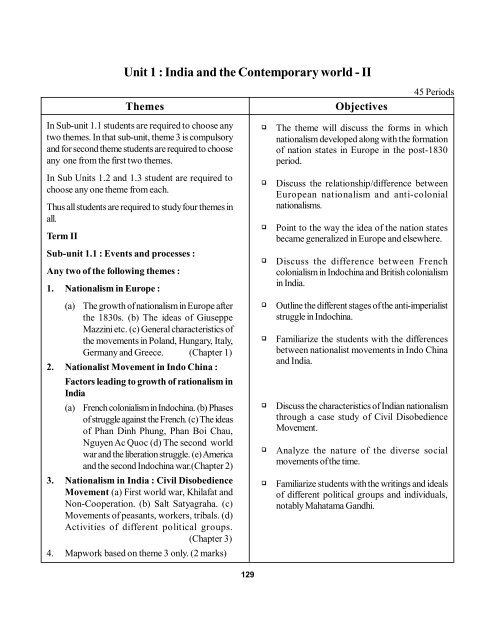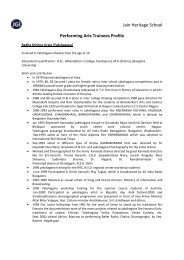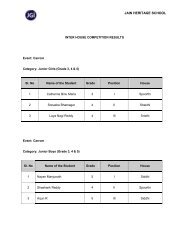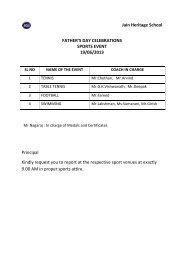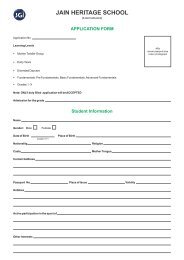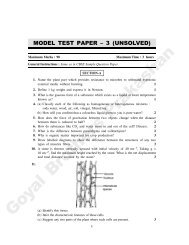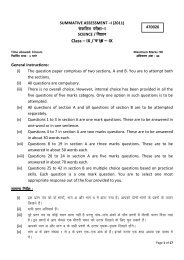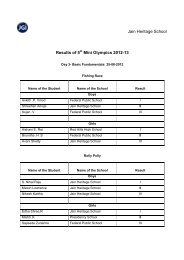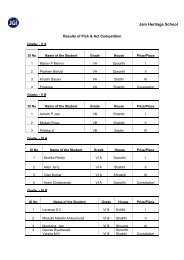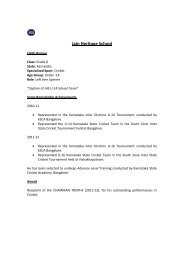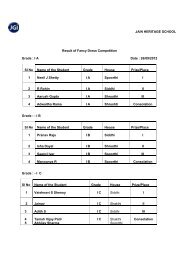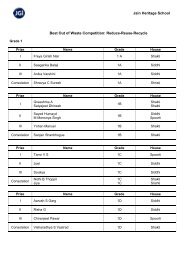Secondary School Curriculum 2012 - Central Board of Secondary ...
Secondary School Curriculum 2012 - Central Board of Secondary ...
Secondary School Curriculum 2012 - Central Board of Secondary ...
You also want an ePaper? Increase the reach of your titles
YUMPU automatically turns print PDFs into web optimized ePapers that Google loves.
Unit 1 : India and the Contemporary world - II<br />
Themes<br />
Objectives<br />
45 Periods<br />
In Sub-unit 1.1 students are required to choose any<br />
two themes. In that sub-unit, theme 3 is compulsory<br />
and for second theme students are required to choose<br />
any one from the first two themes.<br />
In Sub Units 1.2 and 1.3 student are required to<br />
choose any one theme from each.<br />
Thus all students are required to study four themes in<br />
all.<br />
Term II<br />
Sub-unit 1.1 : Events and processes :<br />
Any two <strong>of</strong> the following themes :<br />
1. Nationalism in Europe :<br />
(a)<br />
The growth <strong>of</strong> nationalism in Europe after<br />
the 1830s. (b) The ideas <strong>of</strong> Giuseppe<br />
Mazzini etc. (c) General characteristics <strong>of</strong><br />
the movements in Poland, Hungary, Italy,<br />
Germany and Greece. (Chapter 1)<br />
2. Nationalist Movement in Indo China :<br />
Factors leading to growth <strong>of</strong> rationalism in<br />
India<br />
(a)<br />
French colonialism in Indochina. (b) Phases<br />
<strong>of</strong> struggle against the French. (c) The ideas<br />
<strong>of</strong> Phan Dinh Phung, Phan Boi Chau,<br />
Nguyen Ac Quoc (d) The second world<br />
war and the liberation struggle. (e) America<br />
and the second Indochina war.(Chapter 2)<br />
3. Nationalism in India : Civil Disobedience<br />
Movement (a) First world war, Khilafat and<br />
Non-Cooperation. (b) Salt Satyagraha. (c)<br />
Movements <strong>of</strong> peasants, workers, tribals. (d)<br />
Activities <strong>of</strong> different political groups.<br />
(Chapter 3)<br />
4. Mapwork based on theme 3 only. (2 marks)<br />
<br />
<br />
<br />
<br />
<br />
<br />
<br />
<br />
<br />
The theme will discuss the forms in which<br />
nationalism developed along with the formation<br />
<strong>of</strong> nation states in Europe in the post-1830<br />
period.<br />
Discuss the relationship/difference between<br />
European nationalism and anti-colonial<br />
nationalisms.<br />
Point to the way the idea <strong>of</strong> the nation states<br />
became generalized in Europe and elsewhere.<br />
Discuss the difference between French<br />
colonialism in Indochina and British colonialism<br />
in India.<br />
Outline the different stages <strong>of</strong> the anti-imperialist<br />
struggle in Indochina.<br />
Familiarize the students with the differences<br />
between nationalist movements in Indo China<br />
and India.<br />
Discuss the characteristics <strong>of</strong> Indian nationalism<br />
through a case study <strong>of</strong> Civil Disobedience<br />
Movement.<br />
Analyze the nature <strong>of</strong> the diverse social<br />
movements <strong>of</strong> the time.<br />
Familiarize students with the writings and ideals<br />
<strong>of</strong> different political groups and individuals,<br />
notably Mahatama Gandhi.<br />
129


